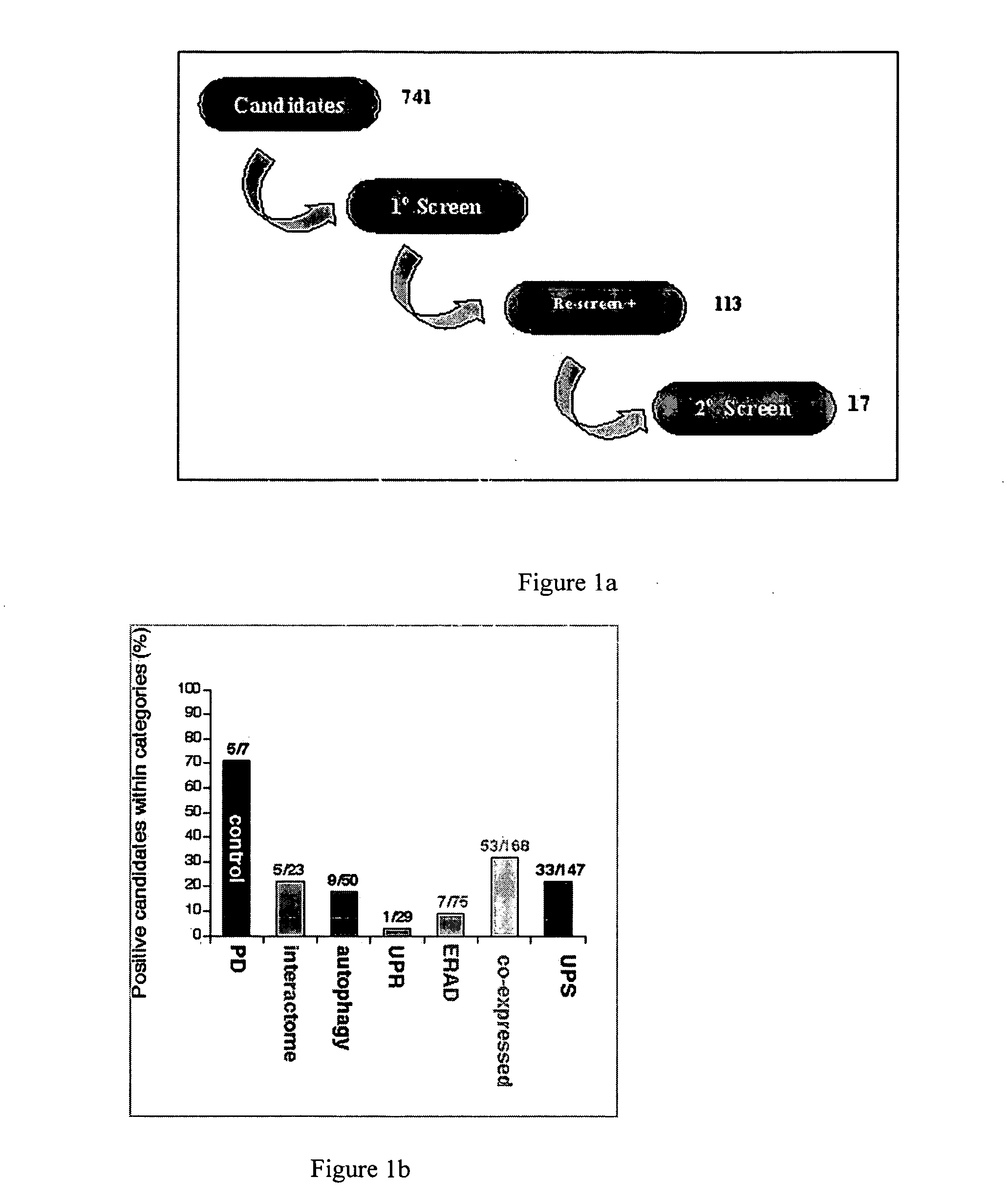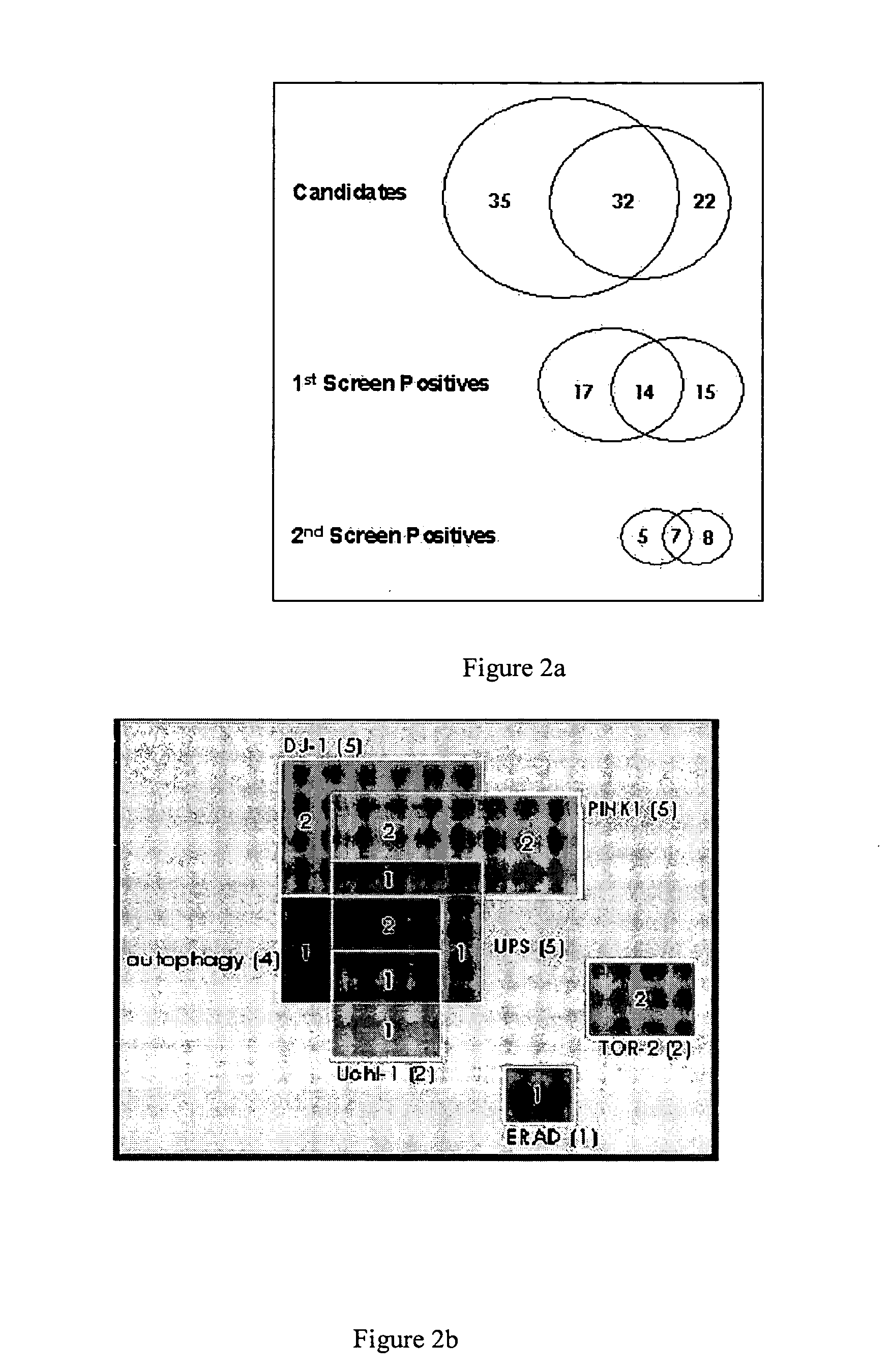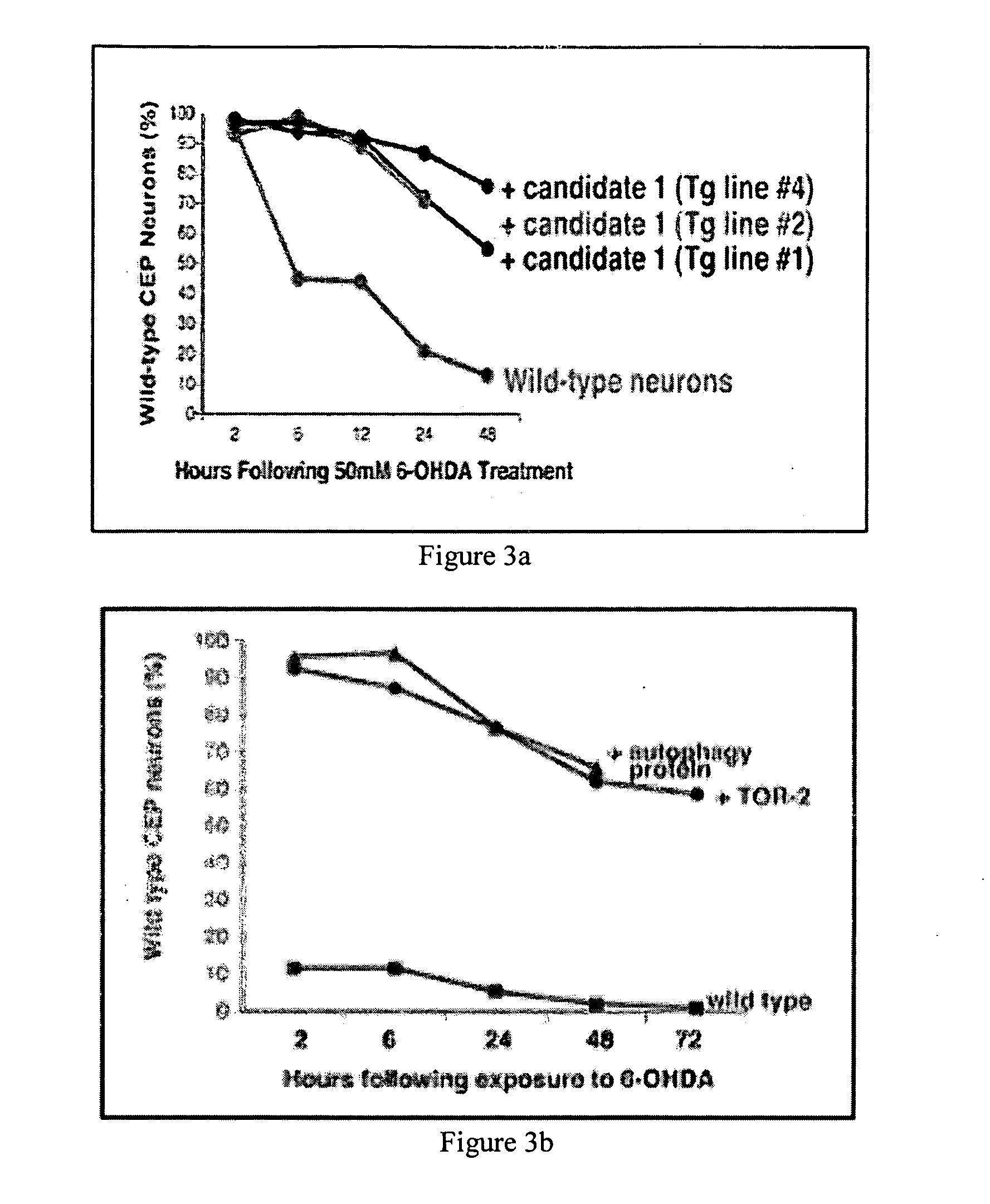Regulators of protein misfolding and aggregation and methods of using the same
a protein and protein technology, applied in the field of polynucleotide molecules encoding neuroprotective proteins, can solve the problems of abnormal accumulation and degradation of misfolded proteins, neuronal inclusions and plaques, and conditions progressively becoming more severe, so as to reduce or prevent protein misfolding, increase protein misfolding and aggregation
- Summary
- Abstract
- Description
- Claims
- Application Information
AI Technical Summary
Benefits of technology
Problems solved by technology
Method used
Image
Examples
example 1
Screening for Genes Regulating Protein Aggregation in Parkinson's Disease RNAi
[0155] A transgenic C. elegans line overexpressing alpha-synuclein::GFP was developed and results in the formation of visual aggregates of alpha-synuclein detectable by fluorescent microscopy. Gene expression is under the control of the unc-54 promoter to direct expression to the body wall. Another transgenic worm line containing alpha-synuclein::GFP+TOR-2 was used for RNAi screening of candidate genes related to protein aggregation. The presence of TOR-2 in the alpha-synuclein::GFP+TOR-2 worm prevents the aggregation of alpha-synuclein::GFP fusion protein in body-wall muscle cells resulting in a diffuse fluorescence. Similar suppression of protein aggregation by TOR-2 has been previously reported for polyglutamine-dependent protein aggregation (Caldwell et al. Hum Mol Genet. 2003 Feb. 1; 12(3):307-19). This transgenic organism allows for a rapid screening method using RNAi feeding in body-wall muscles of...
example 2
Neuroprotection of Dopamine Neurons by Candidate Gene Expression after 6-OHDA Exposure
[0163]C. elegans has precisely 8 dopaminergic neurons that undergo a readily discernable pattern of degeneration upon treatment with 6-hydroxydopamine (6-OHDA), a dopamine analog and neurotoxin which results in the formation of reactive oxygen species in those neurons. Overexpression of either human torsinA or C. elegans TOR-2 in dopamine neurons is able to dramatically suppress neuronal degeneration following alpha-synuclein overexpression or 6-OHDA treatment (Cao et al, J Neurosci. 2005).
[0164] The data from the protein aggregation screens were used to prioritize subsequent tertiary screening for the potential activity of these genes in dopaminergic neuroprotection. Transgenic worms expressing GFP within dopamine neurons have been constructed and extensively analyzed (Nass et al 2002; Cao et al 2005) following 6-OHDA exposure. Phenotypic changes are apparent within 2 hours and typically 6 hours...
example 3
Method of Using a Microarray to Detect Protein Alterations and Diagnose Predisposition to or Presence of Parkinson's Disease in Humans
Production of a Parkinson's Disease Microarray
[0182] A Parkinson's Disease microarray is made using standard commercially available microarray technology such as spotted microarrays or the high-density, oligonucleotide-based platform used by Affymetrix, Inc. A moderate to large number of genes and / or transcripts is selected for analysis, i.e., expression (or response) profiling. Nucleic acid sequences that can be monitored in the methods of the present invention include, but are not limited to, those listed with the National Center for Biotechnology Information (on the world wide web at ncbi.nlm.nih.gov) in the GenBank® databases, and sequences provided by other public or commercially-available databases (for example, the NCBI EST sequence database, the EMBL Nucleotide Sequence Database; Incyte's (Palo Alto, Calif.) LifeSeq™ database, and Celera's ...
PUM
 Login to View More
Login to View More Abstract
Description
Claims
Application Information
 Login to View More
Login to View More - R&D
- Intellectual Property
- Life Sciences
- Materials
- Tech Scout
- Unparalleled Data Quality
- Higher Quality Content
- 60% Fewer Hallucinations
Browse by: Latest US Patents, China's latest patents, Technical Efficacy Thesaurus, Application Domain, Technology Topic, Popular Technical Reports.
© 2025 PatSnap. All rights reserved.Legal|Privacy policy|Modern Slavery Act Transparency Statement|Sitemap|About US| Contact US: help@patsnap.com



